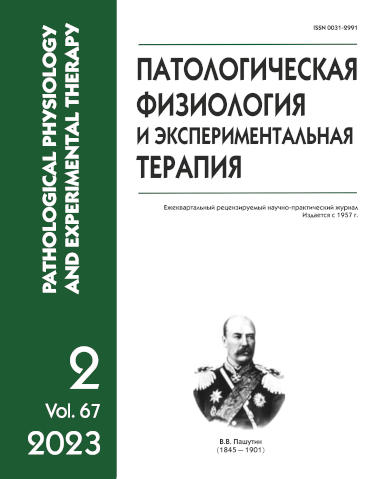Pathogenetic significance of myodestruction in microcirculatory disorders in frostbites
Abstract
Local cold injury is associated with damage to all tissue structures, including striated muscles. Myocyte degradation products are known to impact significantly peripheral hemodynamics and endothelial metabolism. The aim of this work was to study the dynamics of myoglobin concentration, microcirculation, and variables of the bioelectric muscle activity in patients with frostbite. Methods. This study included 44 patients with degree III–IV frostbite of the lower extremities in the late reactive period and the period of granulation and epithelization. Bioelectric activity of muscles and concentration of peripheral myoglobin were measured on the 5th and 30th days after injury. To assess the state of microcirculation, non-invasive laser Doppler flowmetry was performed with a LAKK-02 (Lazma, Russia) apparatus. Concentration of free myoglobin was also measured on the 5th and 30th days after injury in the same patients using a multiplex analysis of blood serum with a Biomedical reagent kit. Results. On the 5th day after cryoinjury, blood concentration of myoglobin was 3460% higher compared to the control group whereas M-response amplitude was 80% lower, residual latency was 70% increased, and microcirculation index was 37.5% decreased. On the 30th day, myoglobin concentration was 600% higher than in the control group, M-response amplitude was 44.4% lower, residual latency was 50% higher, and microcirculation index was 23.1% lower than in the control group. Conclusions. In patients with frostbite, the myoglobin concentration sharply increases at early stages of cryoinjury. A high concentration of free myoglobin is associated with microcirculatory disorders to induce local neuropathy. In patients with local cold injury, the M-response altitude decreases and the residual latency increases. These changes are observed in the late reactive period and the period of granulation and epithelization.






